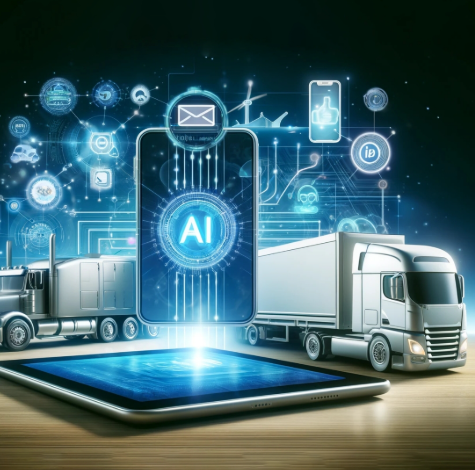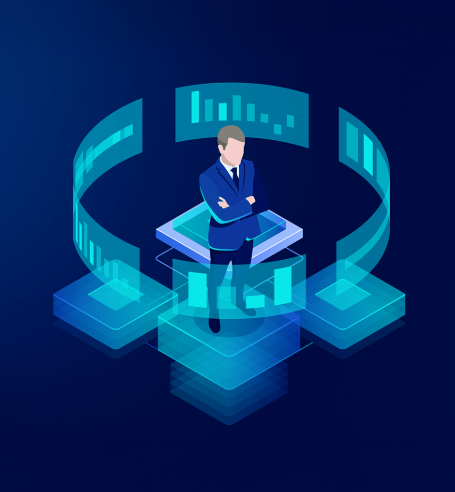How AI is Transforming Logistics and Transportation

Logistics and transportation are integral to the global supply chain, especially as consumer demands rise and shipping complexities increase. Businesses are turning to innovative solutions to optimize operations and minimize costs. AI-powered technologies offer powerful capabilities that provide real-time insights and predictive tools, helping companies tackle challenges proactively and improve their logistics operations.
The Impact of AI in Logistics
AI uses advanced algorithms and systems to process large datasets, including customer orders, traffic conditions, and weather patterns. This data-driven approach allows businesses to make better decisions in real time, improving route optimization, demand forecasting, and delivery times while cutting costs.
Predictive Demand Forecasting
A critical aspect of logistics is aligning supply with customer needs. AI’s predictive capabilities are transforming how businesses forecast demand. By analyzing historical data, seasonal trends, and market fluctuations, AI can accurately predict future demand. This reduces waste, prevents stockouts, and improves resource allocation. In fleet management, AI also helps plan efficient schedules, ensuring vehicles operate at full capacity and reducing idle time, which enhances overall delivery efficiency.
Route Optimization
One of the significant challenges in logistics is managing delays caused by traffic and weather disruptions. AI-powered systems provide real-time updates and suggest the most efficient routes for drivers, taking into account traffic conditions, weather, and delivery windows. This helps reduce travel time, lower fuel costs, and increase safety. With advanced tools simulating multiple route scenarios, logistics companies can make precise route decisions, ensuring timely deliveries while minimizing unnecessary costs.
Predictive Maintenance
Unplanned breakdowns can cause significant disruption in logistics operations, leading to increased costs and downtime. AI addresses this by monitoring vehicle performance through sensors and identifying anomalies that could indicate potential failures. This early detection allows for timely repairs, minimizing downtime and improving vehicle reliability. Additionally, AI helps optimize inventory management for spare parts, ensuring that only necessary repairs are made, preventing over-servicing, and reducing maintenance costs.
Real-World Applications of AI in Logistics
AI is already being used across various logistics applications:
- Autonomous Vehicles: Self-driving trucks are being tested to improve scheduling and reduce driver fatigue, contributing to more efficient and reliable transportation.
- Smart Warehousing: AI-driven systems are improving warehouse operations by reducing errors in picking and speeding up order fulfillment, making inventory management more efficient.
- Dynamic Pricing: AI helps logistics companies adjust prices in real time based on demand, costs, and competitor pricing, offering businesses a competitive edge while optimizing revenue.
These applications demonstrate how AI is enhancing supply chain operations, enabling businesses to operate more efficiently and gain valuable insights.
Steps to Implement AI in Logistics
To integrate AI into logistics, follow these key steps:
- Define Your Goals: Identify the challenges that AI can help address, such as high costs or late deliveries.
- Prepare Your Data: Consolidate data from different sources, including sales, fleet, and warehouse metrics, to facilitate analysis.
- Pilot Projects: Start small with specific tasks like demand forecasting or scheduling to test the impact of AI.
- Monitor Results: Track key performance indicators (KPIs) like cost savings and delivery times to evaluate success.
Addressing Challenges in AI Implementation
While AI offers immense potential, businesses must overcome several challenges:
- Data Quality and Integration: Implement strong data management practices and integration tools to ensure smooth AI adoption.
- Organizational Change: Support AI adoption through training, communication, and leadership to help employees embrace new technologies.
- Skills Gap: Hire or train employees with the necessary skills in AI and logistics.
- Cost and ROI: Start with small pilots to demonstrate AI’s return on investment before scaling up.
- Ethical and Legal Considerations: Ensure compliance with regulations and implement transparent AI practices to build trust.
Case Study: AI in Action at Cargill
Cargill has successfully integrated AI into its logistics operations to improve efficiency and sustainability. For example, AI-driven microbiome analysis helps optimize poultry feed management, boosting performance. The company’s Birdoo tool uses predictive imaging for real-time weight measurement, helping producers optimize their operations and reduce costs.
These innovations showcase how AI can enhance supply chain efficiency, reduce costs, and support sustainability in complex industries.
Conclusion
AI is transforming logistics and transportation, offering practical solutions to optimize operations, reduce costs, and improve customer satisfaction. From predictive demand forecasting to route optimization and predictive maintenance, AI is revolutionizing the way businesses manage their supply chains. As AI technologies continue to evolve, logistics companies that embrace these innovations will be better positioned to meet the demands of an increasingly complex and competitive market.




